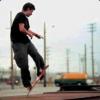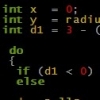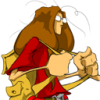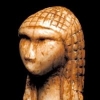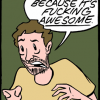As a child, I gained a very deep sense about what makes games terrible via Atari 2600’s E.T. the Extra-Terrestrial. The seeds of understanding a player’s frustration at not knowing what to do and trying to do it with awful controls were planted. Many games would later be examples of both good and bad gameplay, but being so young and the sheer level of bad it had reached made this one of the lessons learned with greatest impact.
Super Mario World was the first game I owned for myself, and it was the first to get me thinking about technical details behind how the computer works. It got me asking the important questions: “How does it know to jump when I hit the button? How does it know I hit a block or fell into lava?”. I was 8.
Mario Paint would likely end up being the single most influential. When I was 10, it allowed me to get into the R&D side of game development that would later be my career.
I wanted to animate sprites growing, shrinking, and rotating, but without built-in tools you had to do it manually.
I wasn’t content with the imperfections in the manual way so I designed a visual mathematical way to do it.
Let’s say I wanted to shrink a sprite by 2 pixels, one on each side. I took the line tool and draw a line above the sprite with exactly the same width, but 2 pixels raised from end-to-end. The two pixels where it changed heights were the columns I would eliminate from the sprite via copying and pasting one pixel over. Repeat for vertical reduction.
I was able to scale sprites up and down in such a way they looked as if they were running on the FX chip. I eventually invented a similar technique for rotations.
It let me, at an early age, explore my ideas for “algorithms” and to see my results come to life, making it easily the most overall influential.
And yet somehow I still didn’t know I was going to be a game programmer or even be in the industry at all.
I was already brainwashed by family, teachers, and classmates, who all insisted I would be able to land a top job as an artist at Disney. I would still need some more influence.
The Legend of Zelda: A Link to the Past, Chrono Trigger and Final Fantasy VII would be the main pushes in that direction (though not all at once of course, as Final Fantasy VII would contribute, but not until later), but initially making me think about being a designer, not a programmer. They showed me games were more than just technology to be figured out, but that they could fully engulf a player into a new world when done correctly.
I started designing my own board games with strategy elements from The Legend of Zelda: A Link to the Past mixed with story elements from the others.
I could do the art and design, but if I wanted to actually get something made, I would have to be able to do the programming and music too.
At the age of late 13/early 14 I started learning programming with TI-BASIC on a TI-81 calculator, and I concurrently began learning piano on my own.
Finally, with Starsiege: Tribes’ script language, I was ready to go full-blast with programming. I already had a few years’ worth of C++ experience by then and now I had an easy way to get real 3D results into a game that others could play.
I finally learned that I like programming even more than design, and as I kept making mods for the game as well as my own side projects such as Something Something VII Online, it slowly became clear what I was meant to do.
And that is how I became an actor on Japanese TV and movies.
The End,
L. Spiro
As a side note, GoldenEye 007 and Perfect Dark were also both huge influences. After I learned more about game development I had a better understanding, and the way they put team heads and personal touches into their games blew my mind, and I wanted to work specifically for Rareware growing up.
That ended as soon as they were bought by Microsoft.
